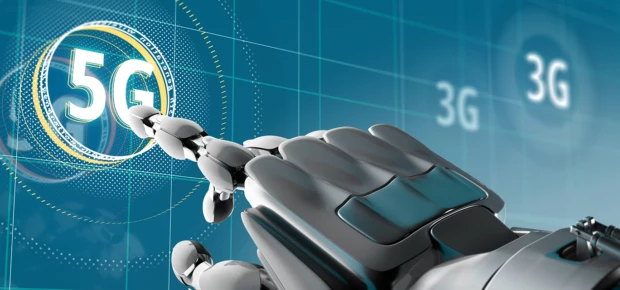
Partner Article
The wireless technologies behind the IoT
Farms vary widely in size, but ones at the larger end of the spectrum are truly massive: a handful around the world now surpass the 3-million-acre mark, with some even topping 20 million acres. For IoT-connected agricultural equipment to be useful over that much acreage, the power and quality of wireless transmission is especially important. And success in that capacity hinges on the development and installation of new 5G (and, in the future, 6G) networks.
“If we narrow our focus to the breakthroughs really necessary to make [the IoT] work properly and allow for the diffusion of the technology, an obvious choice is the telecommunications platform, and, in particular, 5G functionalities,” says Raul Colcher, Life Senior IEEE Member and CEO of Questera Consulting.
5G has generated a lot of buzz over the past three years. There’s an IEEE Future Directions initiative on it that includes the creation of standards, and IEEE Spectrum has covered everything from the basics of 5G to who’s implementing it when. In short, 5G networks will be able to handle 1000x more traffic than 4G, and could be up to 10x faster. The exact nature of 5G is still in development, but shorter waves transmitted by small cell base stations seem likely.
Given the distance the signals need to cover on a massive farm, there’s the question of powering the remote sensors so they can transmit their data. Just a few years ago, it was difficult to imagine a small, long-range, low-cost sensor (the common refrain “pick two” would’ve been applicable). Advances in battery technology and the efficiency of devices is allowing for smaller and cheaper options that last longer, and engineering to solve these problems will have benefits that carry over to consumer electronics.
If 5G does indeed persist as the preferred platform of the IoT, it “will bring less expensive 5G enabled sensors and actuators, which will be progressively incorporated into items offered in retail stores. This will facilitate the extension of purchase information and consumer support to the customer’s home,” says Colcher.
Central to the idea of using sensors in stores is the inclusion of an RFID tag in the packaging of products. A single RFID tag could integrate with multiple applications through a 5G network, allowing shoppers to verify the authenticity of a product, its manufacturing date, or any number of factors, which has promising implications for transparency.
It’s exciting that each of these technologies stands to improve the world individually, and that their effects could well be amplified when used in tandem.
This was posted in Bdaily's Members' News section by IEEE .






 B Corp is a commitment, not a one-time win
B Corp is a commitment, not a one-time win
 Government must get in gear on vehicle transition
Government must get in gear on vehicle transition
 A legacy in stone and spirit
A legacy in stone and spirit
 Shaping the future: Your guide to planning reforms
Shaping the future: Your guide to planning reforms
 The future direction of expert witness services
The future direction of expert witness services
 Getting people into gear for a workplace return
Getting people into gear for a workplace return
 What to expect in the Spring Statement
What to expect in the Spring Statement
 Sunderland leading way in UK office supply market
Sunderland leading way in UK office supply market
 Key construction developments in 2025
Key construction developments in 2025
 Mediation must be part of planning process
Mediation must be part of planning process
 From apprentice to chief financial officer
From apprentice to chief financial officer
 Don't stifle growth with apprenticeship cuts
Don't stifle growth with apprenticeship cuts